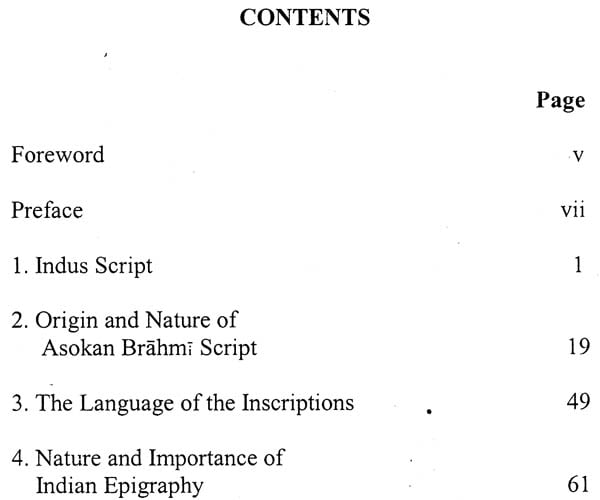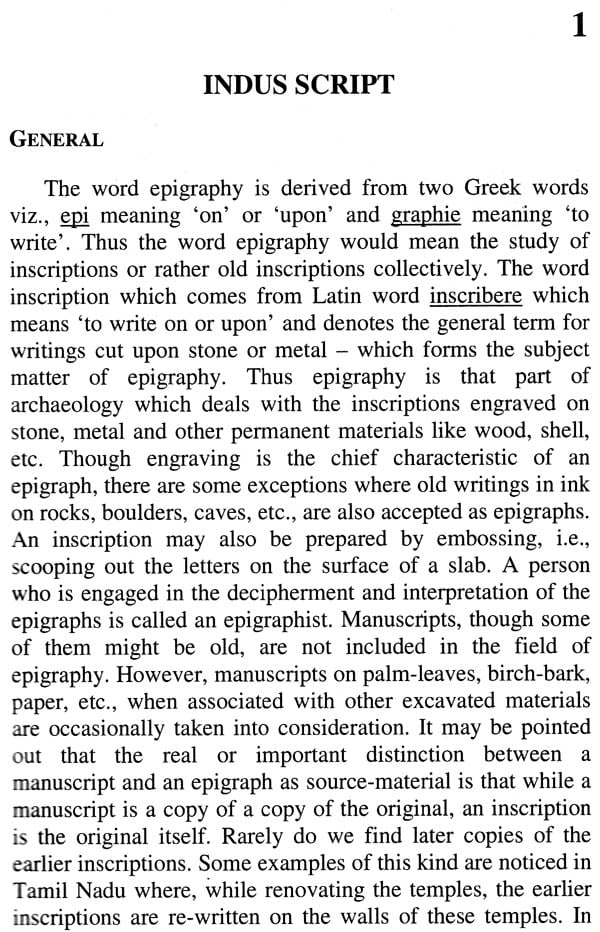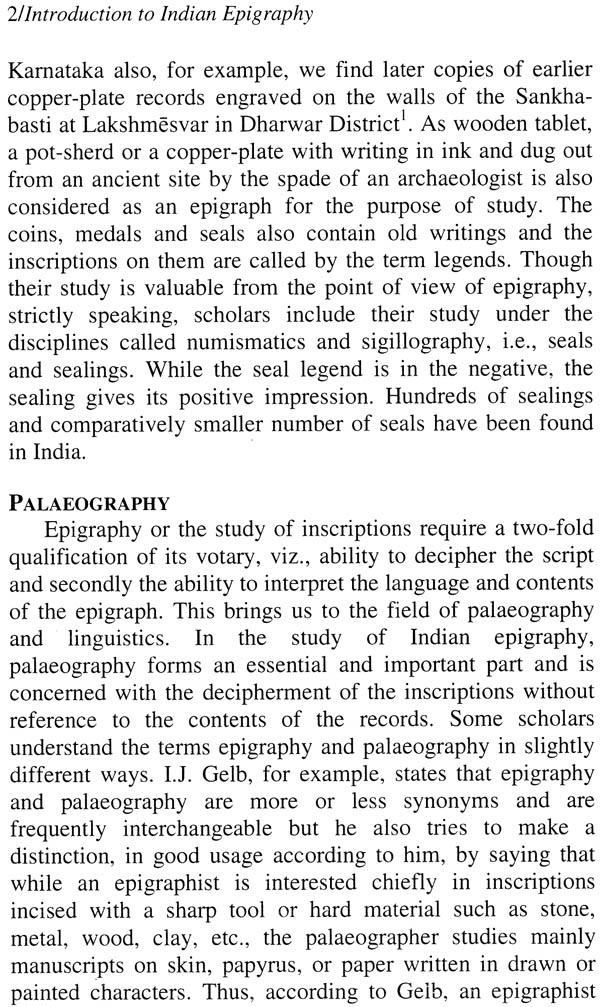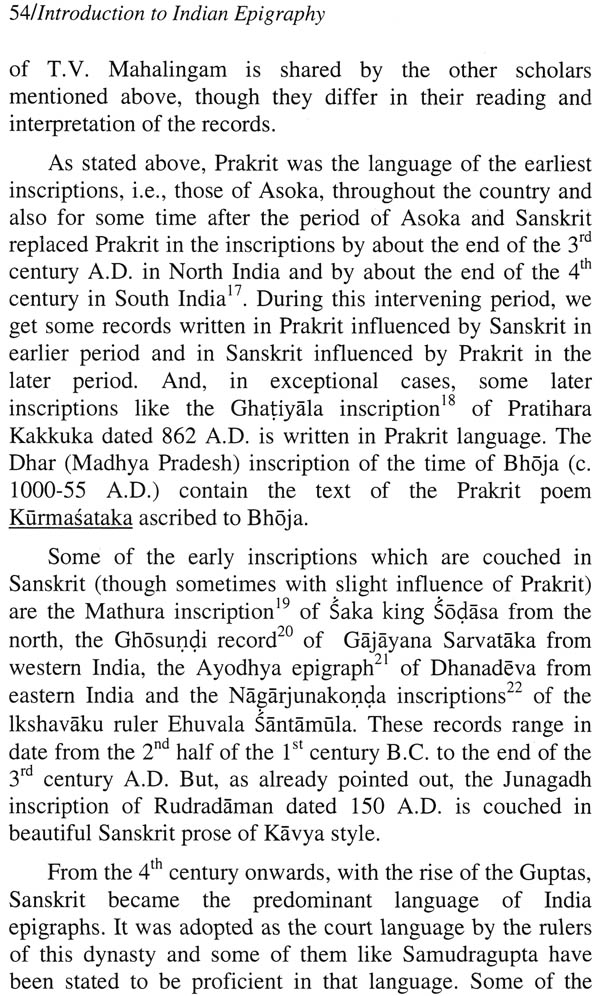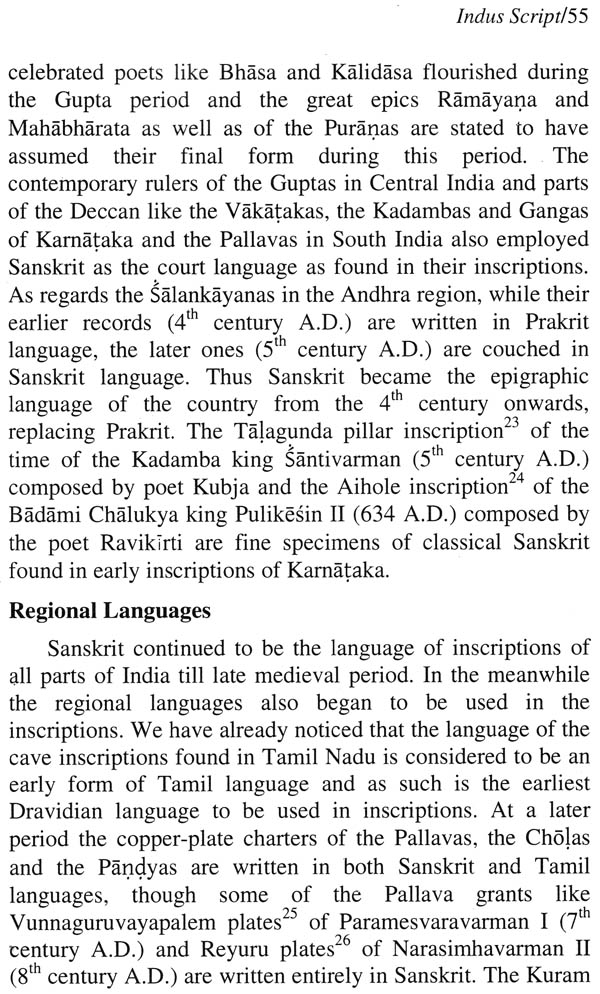
Introduction to Indian Epigraphy (With Special Reference to the Develpoment of the Scripts and Languages)
Book Specification
| Item Code: | NAV890 |
| Author: | G. S. Gai |
| Publisher: | Central Institute Of Indian Languages, Mysore |
| Language: | English |
| Edition: | 2011 |
| Pages: | 84 |
| Cover: | PAPERBACK |
| Other Details | 8.50 X 5.50 inch |
| Weight | 90 gm |
Book Description
The Central Institute of Indian Languages was set up on the 17th July 1969 with a view to assisting and coordinating the development of Indian languages. The Institute was charged with the responsibility of serving as a nucleus to bring together all the research and literary output from the various linguistic streams to a common head and narrowing the gap between basic research and developmental research in the fields of languages and linguistics in India.
The Institute and its six Regional Language Centres are thus engaged in research and teaching which lead to the publication of a wide ranging variety of materials. Preparation of materials designed for teaching/learning at different levels and suited to specific needs is one of the major areas of interest of the Institute. Basic research relating to the acquisition of language and study of language in its manifold psychosocial relations constitute another broad range of its interest. The publications include materials produced by the members of the staff of the Central Institute of Indian Languages and its Regional Language Centres and associated scholars from universities and institutions, both Indian and foreign.
Indian languages are affiliated to four language families whereas Indian scripts belong to one family. This is one of the finest examples of one manifesting in many and many bound by a single thread of unity. Epigraphy as a discipline has not received as much attention as it should have in a multilingual and pluricultural country like India. Both from the point of view of national integration and combating literacy it is essential that as many languages are Written using existing major script systems. Unless science interacts with society both orally and through the written medium scientific temper cannot be developed in the country.
Dr. G. S. Gai, an outstanding Epigraphist of the country wrote this monograph as a Fellow of Central Institute of Indian Languages. The monograph is designed both for the intelligent laymen as well as the post-graduate students who must know something about their ancient heritage.
The Institute is proud of its association with scholars in their intellectual exploration of uncharted fields of knowledge. If this monograph fills a gap in the existing books seen and is found useful the efforts of this Institute would have been amply rewarded.
I thank all those responsible for production of this work.
The present Monograph Introduction to Indian Epigraphy [With Special Reference to the Development of Scripts and Languages] is the result of the work primarily done by me during the tenure of my fellowship at the Central Institute of Indian Languages, Mysore, during 1979-80. In this work more emphasis has been laid on the development of the various Scripts since there are few works on this topic readily available to the readers. Further, in presenting the epigraphical Materials in the following Pages, the interests of the common readers as well as of the post-graduate Students and research scholars have been kept in view. The present Monograph is confined to the discussion on Hindu epigraphy and excludes Muslim epigraphy from its purview.
I take this Opportunity to express my sincere thanks to Dr. D.P. Pattanayak, Director, Centra] Institute of Indian languages, Mysore, for not only getting me the fellowship in the Institute but also for taking keen and Personal interest jin the preparation of this monograph till its completion. I am also thankful to the other authorities of the Institute including the Librarian for affording the necessary facilities for my work.
**Contents and Sample Pages**
